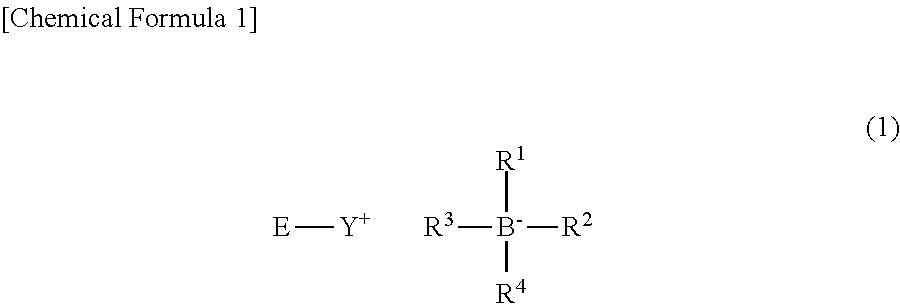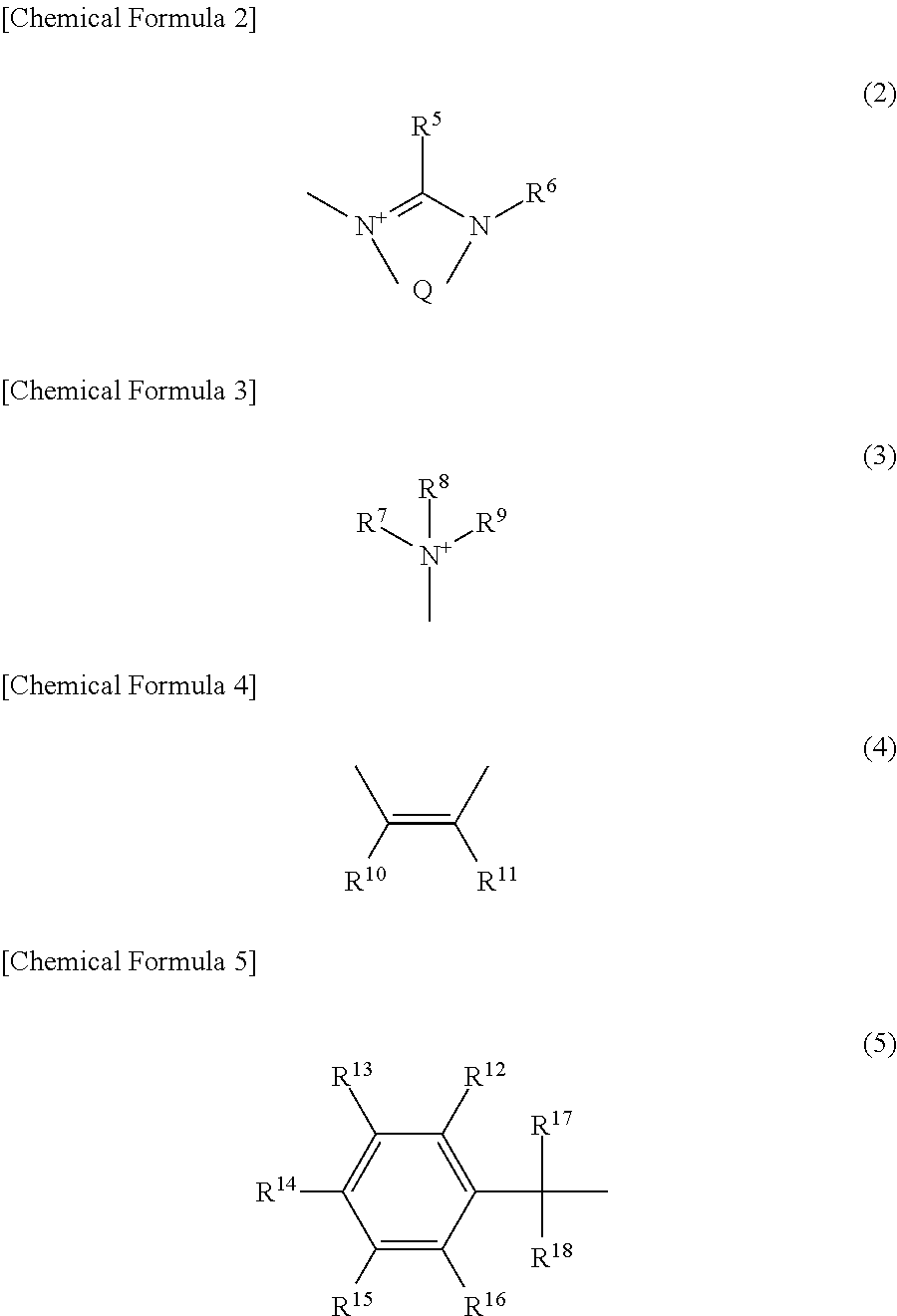Photobase generator
a generator and photobase technology, applied in the field of photobase generators, can solve the problems of large amount of photobase generators, low base generation efficiency, and inconvenient catalysts for polymerization reactions or crosslinking reactions, and achieve the effects of efficient amine generation, high catalytic activity, and efficient amine generation
- Summary
- Abstract
- Description
- Claims
- Application Information
AI Technical Summary
Benefits of technology
Problems solved by technology
Method used
Image
Examples
production example 1
Synthesis of sodium 2-naphthyltriphenylborate
[0085]In a four-necked reaction vessel, the inside of which was replaced with nitrogen, 100 mL of a 0.25 molL−1 tetrahydrofuran solution of triphenylborane (available from Aldrich) was placed, and cooled to −20° C. To the solution, 26 mL of a 1.0 molL−1 solution of 2-naphthylmagnesium bromide prepared by a routine procedure from 2-bromonaphthalene was gradually added dropwise. After dropping, the contents were stirred for 2 hours at room temperature, after which to this solution, 100 ml of a saturated aqueous sodium bicarbonate solution was added, an organic layer was separated and subjected to solvent removal, and the residue was washed with hexane two times and then dried under reduced pressure to obtain an aimed product.
production example 2
Synthesis of sodium 4-biphenylyltriphenylborate
[0086]In place of 2-bromonaphthalene, 4-bromobiphenyl was used to prepare an aimed product according to the method described in Production Example 1.
production example 3
Synthesis of sodium 2-anthryltriphenylborate
[0087]In place of 2-bromonaphthalene, 2-bromoanthracene was used to prepare an aimed product according to the method described in Production Example 1.
PUM
| Property | Measurement | Unit |
|---|---|---|
| pKa | aaaaa | aaaaa |
| pKa | aaaaa | aaaaa |
| pKa | aaaaa | aaaaa |
Abstract
Description
Claims
Application Information
 Login to View More
Login to View More - R&D
- Intellectual Property
- Life Sciences
- Materials
- Tech Scout
- Unparalleled Data Quality
- Higher Quality Content
- 60% Fewer Hallucinations
Browse by: Latest US Patents, China's latest patents, Technical Efficacy Thesaurus, Application Domain, Technology Topic, Popular Technical Reports.
© 2025 PatSnap. All rights reserved.Legal|Privacy policy|Modern Slavery Act Transparency Statement|Sitemap|About US| Contact US: help@patsnap.com



